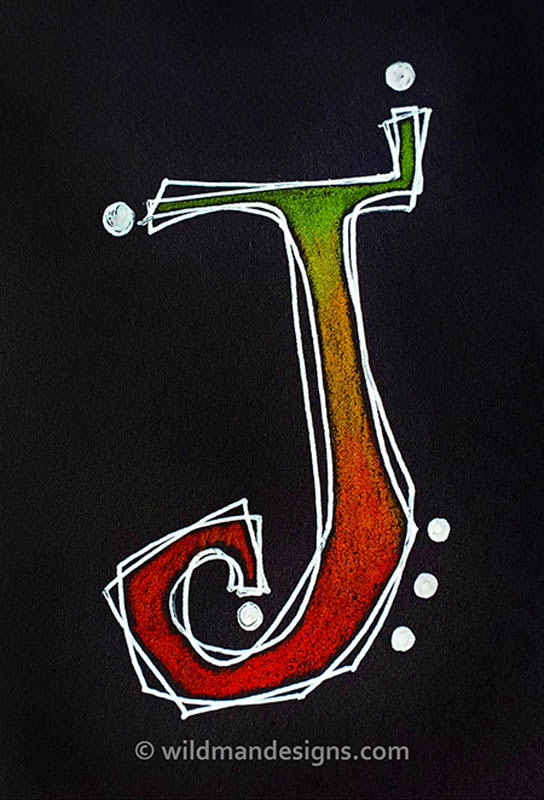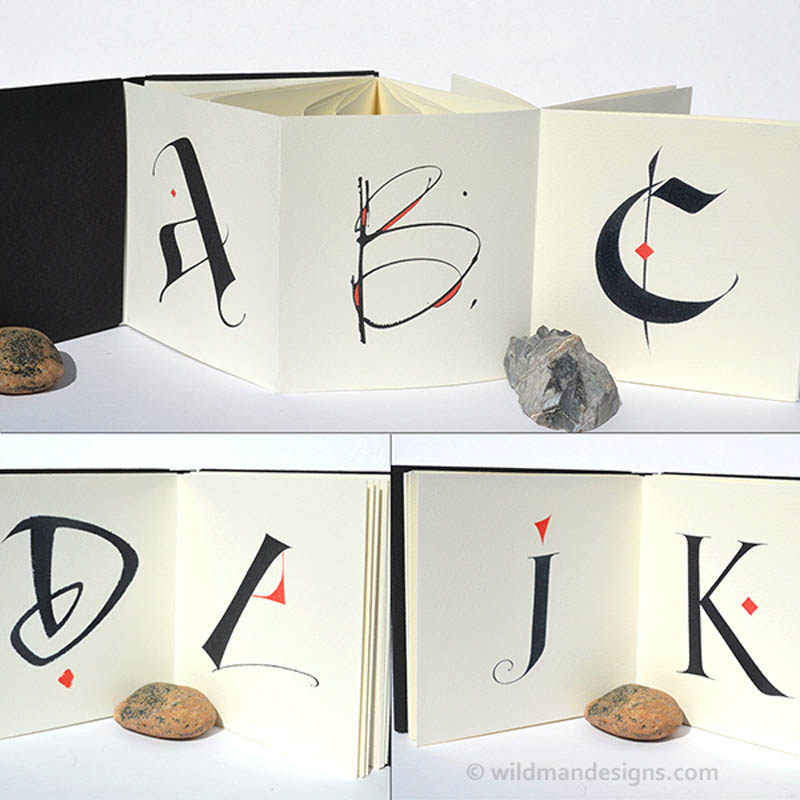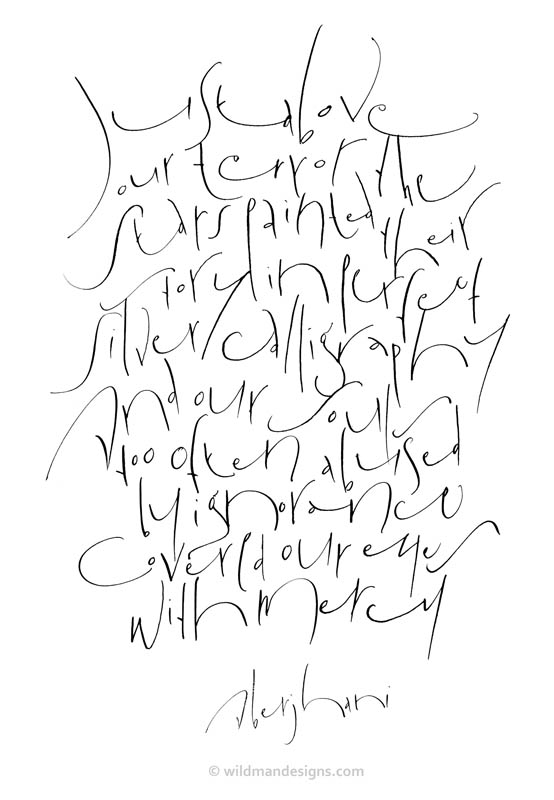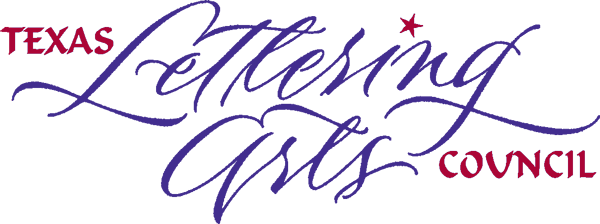
Julie Wildman
Julie will be teaching the following workshops at Legacies III:
Biography
Julie Wildman is a highly regarded professional in the fields of graphic design, commercial lettering, calligraphy and workshops. She graduated with a BA in Graphic Design from Columbia College in Chicago and worked for many years with two Chicago design firms. She currently works as a freelance designer and lettering artist from her home studio near Chicago.
She loves line, shape, color, texture, paper, ink, and paint and often can’t believe she gets to play with them for a living! She enthusiastically shares her love of “beautiful writing” with young and old by teaching calligraphy for staff development classes, on-site promotional events, community programs and personal growth workshops throughout the Chicagoland area, U.S., and Canada. And now, with online Zoom classes, she has been teaching students from more than 15 different countries and counting.
For a complete curriculum vitae and to see more of her work, please visit her website at wildmandesigns.com
The Inside Curve Alphabet
2-Day Workshop

Description
This original, playful hand was created several years ago and is composed of letters that are drawn, not lettered with a specific tool. These built-up letters lend themselves to a variety of applications. Together we will learn the basic forms, then branch out into variations. We will work with pencil, colored pencil, various inks, watercolors and metallics on an assortment of papers.
SUPPLIES
PLEASE NOTE: You do not need to buy all these supplies. These are suggestions. You may work with what you have. This alphabet is drawn, so all you need is a pencil, eraser and a few colored pencils or watercolors. All the other tools will be used for variations. For U.S. residents: John Neal Bookseller has most of these supplies.
- Pencil (2B or 2H) and a sharpener or use a mechanical pencil with your preference on lead size. We will be doing a lot of pencil work.
- White eraser
- Any type of ruling pen (e.g., traditional, Ruling Writer, Handwritmic, Dreaming Dogs, etc.)
- Speedball B nibs—Smaller sizes like a B4 and B 5 1/2 or 6
- Any kind of pointed nib and a straight holder
- 1 finepoint black marker like Pigma Micron in Size 01 or another finepoint marker
- Fineline Applicator (preferred size: 20 gauge/.5mm — blue tip)
- White gel pen (your favorite brand—could als0 have some colors if you prefer)—or use white gouache with a pointed pen
- Small bottle each of black sumi and walnut ink, plus cups for ink
- Small bottle of distilled water (to dilute sumi if necessary)
- Jar of Dr. Martin’s or Winsor & Newton Bleedproof White or small tube of white gouache and cup to mix
- 23 tubes or bottles of your favorite watercolors
- One inexpensive flat (1/8”) watercolor brush (Simply Simmons is a good brand)
- One inexpensive pointed watercolor brush
- A few small cups for ink or paint for larger tools
- 6well paint palette
- Metallic gold watercolor (e.g., Schmincke Horadam Gold, Daniel Smith Iridescent Gold, Finetec metallics, etc.)
- Metallic Schmincke Dry Gouache Sec or Pearl Ex Powdered Pigments (optional)
- Lots of practice paper with some tooth, preferably 11” x 17” or 12” x 18”. (Pacon Sulphite drawing paper medium weight is good because it has a bit of texture and takes ink very well. (Available on DickBlick.com and Amazon.) Don’t use really smooth paper. A pad of Strathmore Drawing paper is another option.)
- A few of your favorite colored pencils
- 25or 50 sheet 9” x 12” pad of tracing paper
- A few half or quarter sheets of your favorite nice papers. One white, one color, and one black. (Suggestions: Arches Text Wove, Nideggen, Bugra, Tiziano, Canson MiTientes, Arches Black Cover, Artagain Black, Papier Canal Montréal, etc.)
- Water container (for cleaning tools)
- Roll of paper towels
Alphabet Book
3-Day Workshop

Description
In this class, students will learn how to create a cohesive alphabet and make an accordion-fold book to display it. They will also have the option of doing a non-cohesive (different style for each letter) alphabet.
We will spend the first part of the class analyzing other alphabets to find out what features determine a cohesive look. Studying the letter parts will help the students understand not only the structure of the letters, but the nuances that go into developing hands or fonts. Students will then be led through a series of exercises–using both traditional and non-traditional tools–that will result in all sorts of creative ways to make letters. We will gradually work our way to finding a style that works for each person. The second half of this workshop will be spent on refining the alphabets and deciding whether to use color or black and white. The final portion of the class will be to assemble a simple, but elegantly designed, accordion-fold book with an origami-type cover. (There is no gluing or sewing involved.)
SUPPLIES
CALLIGRAPHY SUPPLIES
- Favorite calligraphic tools (could include broadedged and pointed nibs; ruling, parallel, and automatic pens; unusual tools like cola or broom bristle pens)
- 1 Black Sharpie marker (fine point)
- 2 fine point black markers like Pigma Microns in sizes 005 & 01
- Small bottle of black sumi ink
- Small bottle of walnut ink
- 30 ml jar of Dr. Martin’s or Winsor & Newton Bleedproof White or a tube of white gouache
- Watercolors, plus one metallic in either watercolor or gouache
- A few inexpensive flat, watercolor brushes to apply color (Brushes are optional. Simply Simmons is a good brand.)
- Favorite pointed brush (only if you like to do pointed brush writing) OR an Aquash Waterbrush Pointed (medium 12mm tip) OR a Pentel Color Brush in Black or another color
- Lots of practice paper (Sulphite drawing paper is good because it has some tooth to it. Don’t use really smooth paper.)
- Scissors
- Pencil, sharpener and some erasers (kneaded and/or white)
- Sixwell palette
- Water container (for cleaning tools)
- Roll of paper towels
- Some nice papers you have in your stash. These papers would be if you want to try your letters on paper other than that used for the pages of your book. Black or other colors would be nice.
Suggestions: Arches Text Wove, Nideggen, Canson MiTientes Black, Ingres Black, Arches Black Cover, watercolor paper in 90# or 140# cold press (rough), marbled papers, colored papers, paste papers, etc.
MATERIALS FOR BOOK
I am putting in my suggestions for papers, but you may use anything that’s equivalent in weight. For those students in the U.S., all my suggested papers may be purchased from Dolphin Papers, www.dolphinpapers.com, a paper company near Indianapolis, IN.
- Pages: 2 sheets 22″ x 30″ Stonehenge White or Warm White, 250gsm You may use any white or offwhite paper that is equivalent: 140# index or 100# cover. DO NOT USE a light text weight like Arches Text Wove.
- Covers: 1 sheet 20″ x 26″ Fabriano Tiziano, 160gsm. You may use an equivalent: 108# text or 65# cover. This will be folded in an origamistyle fold, so don’t use anything too thick. Your choice of color.
- Spine: Same paper as the cover.
- Boards: 2 pieces of 8.5″ x 11″ chipboard or mat board, no more than about 1/16″ thickness (boards will be hidden)
- 3M #415 Doublesided Bookbinders Tape 1/4″, available at talasonline.com
or any kind of archival doublesided tape 1/4″ wide (link to tape on Amazon) - Archival glue stick (if you don’t want to buy tape)
- Bone folder
- Metal ruler
- Pencil
- Xacto knife with a few #11 blades
- Cutting surface
- Two pieces of chipboard or mat board approx. 5” W x 2” H
- One large binder clip (about 2″ wide x 1″ deep—see photo at right)
Alphabet Book Supply List
- 2″
- 1″
- Trimming Instructions
- Pages: Trim off approximately 1″ if your paper has deckled edges.
- Trim 10 pieces to 5″ x 20″ each. You will have leftovers.
- Covers: Trim 4 pieces to 5″ x 9″ each
- Spine: Trim 1 piece to 5″ x 4″
- Boards: Trim 2 pieces to 5″ x 5″
- Trim 2 pieces to 5″ x 2″
- (These pieces will be used to protect your book from being damaged by the binder clip)
Akim Variations and Long Compositions
1-Day Workshop

Description
‘Akim Cursive’ is a hand created by calligrapher Hans-Joachim Burgert and is said to replicate the rhythm of the human heart.
We will briefly explore Burgert’s version, then move into more expressive variations using several different tools. Once students become familiar with working on the variations, we will writing longer texts and compositions, focusing on the rhythmic patterns that Akim is known for.
We will also look more closely at Burgert’s abstract compositions and create larger pieces that mimic his style.
SUPPLIES
NOTE: All supplies listed, except a fine point Sharpie marker or ballpoint pen and some practice paper, are optional. Akim can be done with a very simple monoline tool. However, I will be showing all of these tools in my demos. And adding color. If you don’t have the time or money to order them, no worries. You can still do all the exercises.
(U.S. residents: John Neal Bookseller has most of these supplies.)
- Any type of ruling pen (e.g., Ruling Writer, Handwritmic, Dreaming Dogs, etc.)
- Any type of folded pen (e.g., Luthis, Tim’s, handmade cola pen)
- Any pointed nib and straight holder
- 1 fine point black marker like Pigma Micron in Size 01 or a Sharpie
- Small bottle of black sumi, walnut, or other ink and cups for ink (try several if you have them)
- Small bottle of distilled water (to dilute sumi if necessary)
- Fineline Applicator (completely optional)
- 30 ml jar of Dr. Martin’s or Winsor & Newton Bleedproof White or a small tube of white gouache and cup to mix
- Small bottle each of black sumi and walnut ink, plus cups for ink
- Jar of Dr. Martin’s or Winsor & Newton Bleedproof White or small tube of white gouache and cup to mix
- 23 tubes or bottles of your favorite watercolors
- One inexpensive flat (1/8”) watercolor brush (Simply Simmons is a good brand)
- One inexpensive pointed watercolor brush
- 6well paint palette
- Metallic gold watercolor (e.g., Schmincke Horadam Gold, Daniel Smith Iridescent Gold, Finetec metallics, etc.)
- Metallic Schmincke Dry Gouache Sec or Pearl Ex Powdered Pigments (to sprinkle into wet media)
- Lots of practice paper with some tooth, preferably 11” x 17” or 12” x 18”.* (Pacon Sulphite drawing paper (80lb. or 90lb.) is good because it has a bit of texture. (Available on DickBlick.com and Amazon.) Don’t use really smooth paper. A pad of Strathmore Drawing paper is another option.)
- A few of your favorite colored pencils
- Some practice paper with some tooth, preferably 11” x 17” or 12” x 18”. (Pacon Sulphite drawing paper is good because it has a bit of texture. Don’t use really smooth paper. A pad of Strathmore Drawing paper is another option.)
- A few small sheets of your favorite nice papers to try out ink and tools. Whatever you have in your stash. One white, one color, and one black. (Suggestions: Arches Text Wove, Nideggen, Bugra, Tiziano, Arches Black Cover, Artagain Black, Papier Canal Montréal, etc.)
- Water container (for cleaning tools)
- Roll of paper towels
